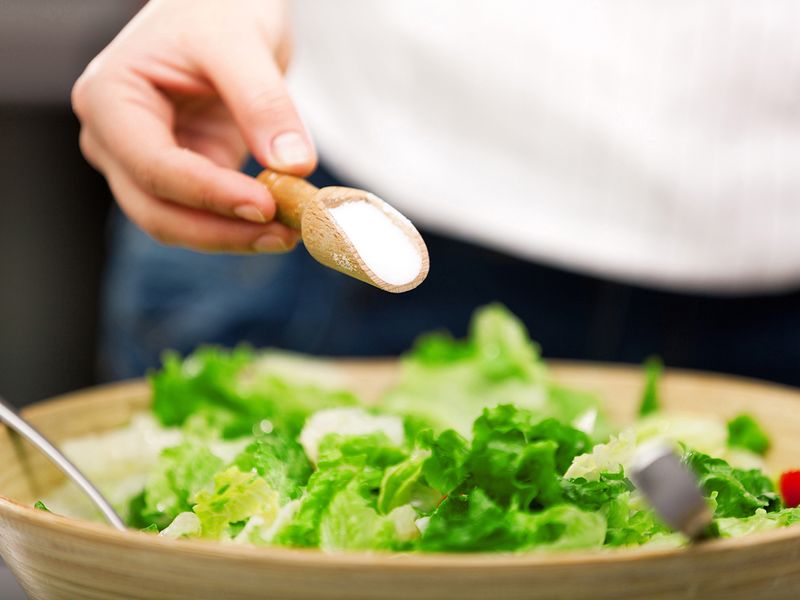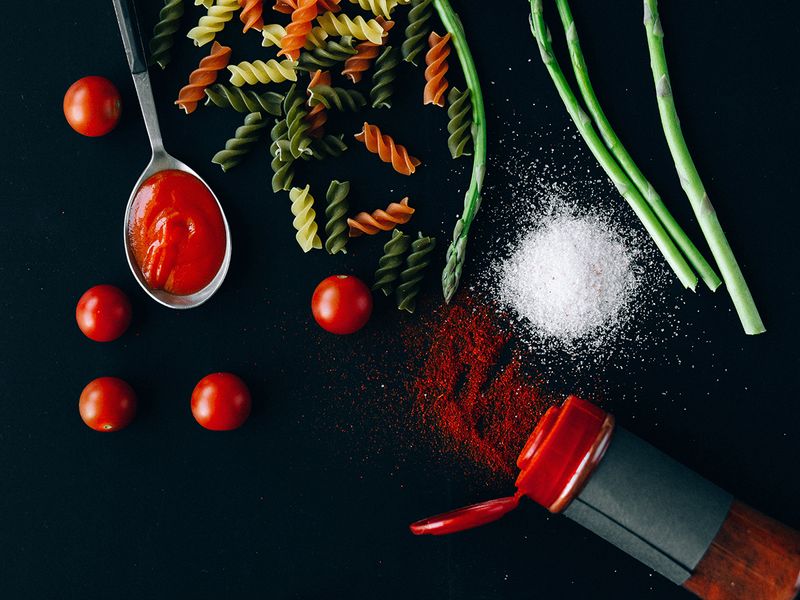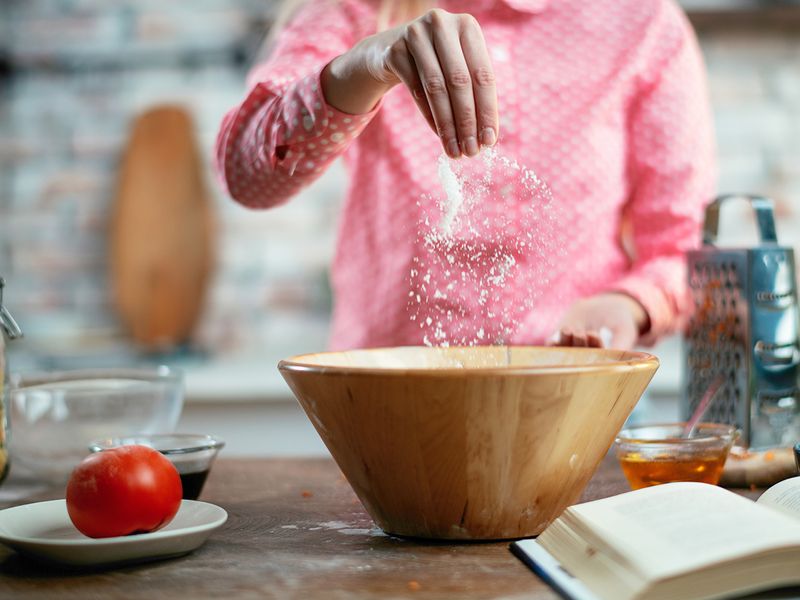
Do you remember when the New York-based Turkish chef Nusret Gökçe went viral for sprinkling salt on his meat? He even acquired the moniker Salt Bae, for his theatrics to perform a seemingly mundane task that all of us do on a daily basis. Yet this flex of his forearm wasn’t all that caught attention. It brought out the worry about the constant debate surrounding salt intake: How much is too much? How little is too little?
As the confusion still persists, we talked to experts to get some answers.
Not just a finishing touch for food

Think of salt like a battery that actually boosts your nervous system. It’s not just to flavour your food: Your body depends on it.
Salt, contains the element sodium, which has a variety of crucial functions. The two terms are not inter-changeable, even though people often make the mistake of doing so. Munawara Yahaya, a clinical dietician at Nabta Healthcare, Dubai, explains that sodium, helps to manage the water levels in and around cells. “This function is vital for cellular hydration. It ensures the proper functioning of tissues and cells throughout the body,” she explains. In essence, it promotes hydration levels and the electrolyte balance in the body. The cells, muscles and tissues require water and salt assures that the body maintains the right amount of fluid.

Sodium, a chief component of salt, manages the water in and around the cells in the body. This function is vital for cellular hydration. It ensures the proper functioning of tissues and cells throughout the body...
Apart from these functions, salt enables the healthy functioning of nerves and muscles. “Sodium, a chief component of salt, helps in transmitting the nerve impulses. It enables communication between the brain and the various body organs,” says Yahaya. Moreover, it is also involved in muscle contractions, as well as helps them relax.
As a result, adequate salt intake helps maintain fluid balance, and influencing the blood pressure levels. “The recommended daily salt intake for an adult is about six grams. This is lower for children, at less than two gram per day in one to three year olds and less than one gram per day in children under the age of one, as their kidneys are still developing and unable to process higher sodium intake,” says Tamara Alireza, a Dubai-based functional medicine practitioner.
The different kinds of salt:
Iodised, or table salt is the most common type of salt, according to US-based Mayo Clinic. This salt has smaller crystals, which gives it a stronger flavour, as compared to other types of salt. One teaspoon of iodised salt has 2,300mg or 2.3gms of sodium, as per the Harvard Medical School of Public Health.
Kosher salt is in the form of flakes and grains. It has bigger crystals, which results in it having less sodium by volume than table salt. One teaspoon has 1,920mg or 1.9gms of sodium.
Sea salt is made by evaporating seawater, leaving behind the salt. It may also contain trace minerals, according to Mayo Clinic. The sodium levels are comparable to table salt. One teaspoon of sea salt has around 2120mg or 2.1gms of sodium.
Specialty salts include Himalayan pink salt, red salt, black salt, smoked salt, and others. Himalyan salt has 2.2gms of sodium in a teaspoon measure.
If your salt intake is askew, you can imagine the havoc it can cause. Too much and too little: Both situations can be dangerous.
Too much salt?

The truth is that only a quarter of our daily intake comes from the salt we add into our food. The rest of the salt is tucked away in the food that we eat, which includes bread, soups and sources.
“Ultra-processed foods, fast food, packaged products, smoked meats, canned foods in brine, ketchup, mustard and soy sauce all contain higher levels of salt,” elaborates Alireza. “The routine consumption of these items can increase sodium levels, at which point it may be useful to switch to more unprocessed, whole foods and home cooking,” she says.
However, many manufacturers mention sodium content, rather than salt. This makes us believe that we’re consuming less salt than we are, according to research done by BBC, the British news agency in 2019. According to a nutritionist quoted in a BBC report, salt is made up of both sodium and chloride ions. “In 2.5gms of salt, there is about 1gm of sodium. The general public isn’t aware of this, and just think sodium and salt are the same thing,” British nutritionist May Simpkin had said.
As a result, without realising, we consume far more salt, than we think we do. Our bodies retain water when we eat salt. The blood pressure increases, until our kidneys flush it out. The news outlet also cited a meta-analysis of 13 studies published over 35 years, which found a 17 per cent greater risk of total cardiovascular disease and a 23 per cent greater risk of stroke from consuming an extra 5gms of salt per day.
Toxicity in the blood: Hypernatremia
What happens if there’s too much salt in the body? The high level of sodium pulls the water out of the cells, back into the blood and dilutes the excess. As a result, there is fluid retention and blood pressure fluctuation, explains Alireza. This has the potential to cause severe damage to blood vessels, affect the heart, increasing the risk of developing cardiovascular issues.
The increased blood volume involves more work for the heart and adds extra pressure on the blood vessels, which could result in a heart attack and stroke. There is also the risk of osteoporosis, which is a condition when the bones deteriorate, become fragile and brittle. Excessive sodium in the blood can cause hypernatremia, which is a condition that happens in older adults, who do not eat or drink enough water. There are repercussions of fever, vomiting and dehydration, according to research published in The Harvard School of Public Health.
As sodium accumulates in the blood and water constantly gets transferred out of cells and into the blood to dilute it, the build-up of fluid in the brain, can cause seizures, coma or even death. This collection of fluid in the lungs causes difficulty in breathing, says Alireza.
What happens when there is a sodium deficiency
On the flipside, a deficiency of salt in the body is just as dangerous. When there’s insufficient sodium in the blood, it is known as hyponatremia. This occurs when there is a severe imbalance between water and sodium. Simply put: There’s either too much water or not enough sodium in the blood, as Dubai-based physician Priyanka Sainani explains. "The electrolyte balance goes sideways, and a lot of the mechanisms can go into malfunction," she says.

If there's a lack of sodium in the body, the person could suffer muscle cramps, dizziness, disorientation and confusion. There is a loss of cognitive co-ordination. They could lose consciousness....
The water moves into body cells, causing them to swell. It also dilutes the sodium levels. This affects the brain cells, which can affect the mental status of a person.
The condition of hyponatremia, leads to muscle cramps, dizziness, says Sainani. There is a sense of disorientation and confusion, and is a case of medical emergency. The person could lose consciousness, suffer seizures or go into coma. Anyone can be at risk for hyponatremia, but it is more likely for people who have kidney failure, heart conditions, or have previously had surgery.
How do we watch our salt intake?

For one, choose a home-cooked meal over ordering a pizza.
“You need to adopt a moderate approach, coupled with a diet rich in fruits, vegetables, lean proteins, and whole grains,” says Yahaya. “This helps mitigate the risks associated with excessive salt consumption,” she says. You also need to be aware about hidden salt sources in processed foods, read labels carefully. “Make informed choices to maintain salt intake, within recommended limits,” she says.
Skip the frozen dinners, and other sodium-high foods such as pizza, fast food and packaged items. You can try opting for skinless poultry, and lean cuts of meat, rather than those marinated, smoked or brined. You need to limit salty and heavy red meats; even items like bread contain moderate amounts of sodium when consumed frequently.
Eat and prepare your own food at home if and when you can, because you can at least control how much salt is added. According to research done by the American National Heart, Lung and Blood Institute, a global medical platform, you can try experimenting with flavours like herbs, spices, lemon, lime and vinegar, instead of salty seasonings like soy sauce and other spice blends.









